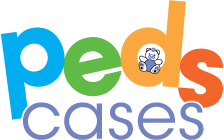Pediatric Education Online

This PedsCases note provides the most updated developmental milestones chart for the first six years. The following resource was developed by Dr. Cara Dosman, a Developmental Pediatrician at the University of Alberta, with local and national colleagues.
HOW TO USE the ‘Crucial skills’ Developmental Attainments Charts:
‘Crucial skills’ is a chart of typical/normal/expected development (according to cultural norms) that can be used to: 1) learn typical sequences of development; 2) guide parents in supporting development; and 3) assist in monitoring development informally. Skills are placed at the ‘oldest’ age of attainment (based on references with level of evidence cited). Age rows are generally set according to Canada's preventative visit schedule and so a skill attained between the two age rows is placed in the older of the two rows. If a child does not yet show the skills in their age row, they might have a developmental delay (‘possible developmental delay’). This chart is not a standardized developmental assessment tool and 'possible developmental delay' is more accurately identified by the use of standardized developmental screening instruments. Developmental delays are confirmed through formal evaluation by allied health professionals. Children with ‘possible developmental delay’ (identified by screening and/or informal surveillance) need further support and evaluation, such as: 1) referrals; 2) parenting guidance; and 3) health/etiologic investigations and management, as appropriate.
INFLUENCES on child development:
There are many influences on child development. Therefore, there are many possible reasons why a child may not yet show a ‘crucial skill’ at their age: Skills in other sectors and context. For example, self-feeding depends on:
1) Skills the child has attained in other sectors of development
Gross Motor stable posture (sits with support and head/neck control)
Visual-Fine Motor Coordination for grasp
Communication (parent sees child turns away , does not open mouth to accept food and understands this means child is full)
Cognitive understanding of goal-directed action (to bring spoon to mouth)
Social-Emotional interest in exploring food
2) Context:
Difficulty of task relative to child’s skill level Materials required e.g. child-sized utensils
Surrounding environment e.g. distraction-free
Parent resources e.g. their mental health to observe child
Parenting strategies e.g. feet flat on footrest and freedom to explore for utensil use
Cultural expectations e.g. is self-feeding relevant at this age
Click the image below for a full-page PDF.